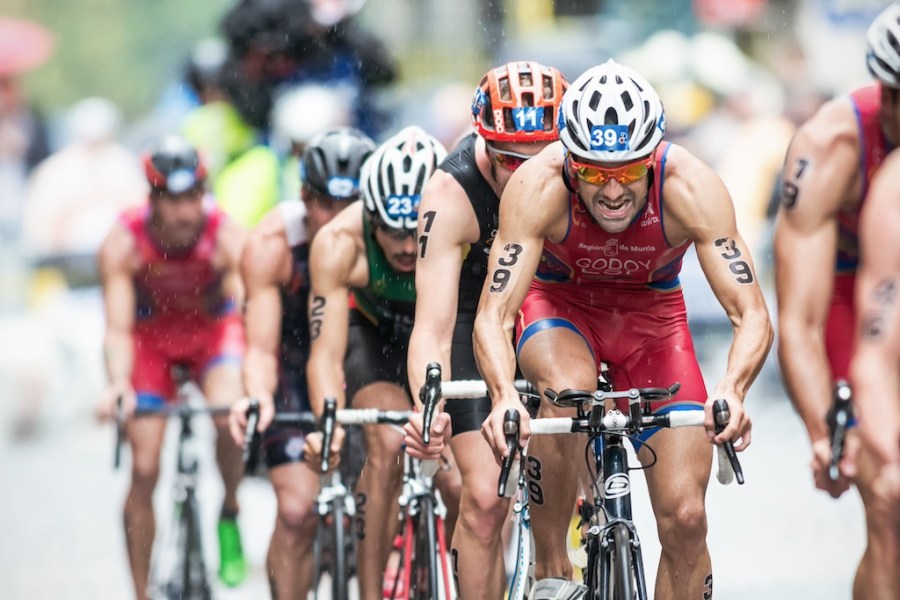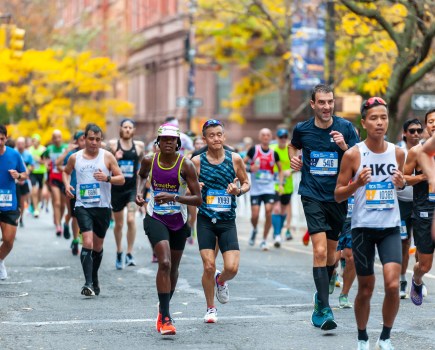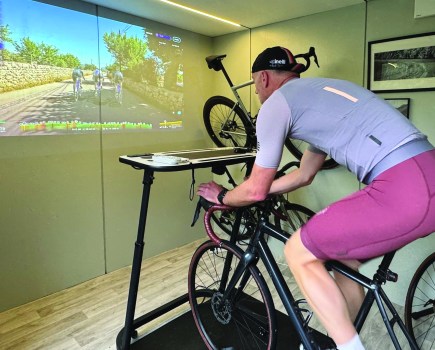Participating in an Ironman triathlon is an extraordinary challenge that demands not only peak physical fitness but also exceptional mental resilience. Widely regarded as the toughest one-day endurance event in the world, an Ironman covers a total of 140.6 miles (226.3km), beginning with a 2.4-mile (3.86km) open-water swim, followed by a 112-mile (180.25km) bike ride, and culminating in a full 26.2-mile (42.2km) marathon run.
Dominic Taylor, 26, has coached at least a dozen athletes to the Ironman finish line and completed Ironman Wales twice himself, so he knows exactly what it’ll take for you to do it too.
A former rugby player, Taylor took up running when shoulder injuries forced him out of the game, progressing to triathlons and completing his first Ironman in 2019. He’s since conquered Ironman Wales for a second time as well as the Ironman Barcelona event.
“The first one is always the hardest,” explains Taylor, who finished his first Ironman in 11 hours. “That’s mainly because you’re more worried about not finishing than the race itself. There’s a lot of anxiety about all the training leading up to it, but once you’re in it, it’s all about getting through the day.
“When I stepped up to training for this, I used the Don Fink method, which is a straightforward Ironman plan that’s more time-based than anything: building up slowly from shorter sessions to longer, and striking that important balance of intensity, endurance, and recovery.”
Ironman requirements
“Each individual’s circumstance will be different,” says Taylor. “For example, I don’t have kids yet so I have more time to dedicate to training. You train in four key areas: swimming, biking, running, and strength conditioning.”
What will get you through an Ironman
Physical fitness: You must have high levels of endurance, strength, and cardiovascular fitness. This includes having a robust aerobic base, muscular strength for biking and running, and the ability to sustain prolonged periods of activity. Training often involves multiple hours per day of swimming, cycling, and running, and should include strength training and core conditioning.
Training commitment: Preparing for an Ironman typically requires at least six months to a year of dedicated training. Competitors often train 15-20 hours a week, depending on their starting fitness levels. A typical training week includes long bike rides and runs, interval training for speed, technique drills for swimming, and brick workouts (back-to-back cycling and running sessions) to mimic race conditions.
Nutrition and hydration: Proper nutrition and hydration strategies are crucial both during training and on race day. Athletes need to fuel their bodies with the right balance of carbohydrates, proteins, fats, and electrolytes. Many competitors practice their race-day nutrition in training to determine what works best for them to avoid gastrointestinal distress during the race.
Mental toughness: Completing an Ironman is as much a psychological challenge as a physical one. Athletes need to develop mental resilience to push through pain, fatigue, and adverse conditions. Mental strategies such as visualization, positive self-talk, and mindfulness can help competitors stay focused and motivated throughout the race.
Time management and lifestyle: Balancing training with other life commitments like work, family, and social activities is essential. Many athletes find it challenging to maintain a balance due to the significant time investment required for training and recovery.
Technical skills: Proficiency in swimming, cycling, and running is necessary, but so is the ability to handle a bike effectively and navigate through open water. Athletes need to be comfortable with various aspects of cycling, such as gear shifting, climbing, descending, and maintaining aerodynamics, as well as the technique of open-water swimming.
Equipment and gear: Investing in proper equipment is essential. This includes a high-quality triathlon bike, wetsuit, running shoes, and other gear like helmets, cycling shoes, goggles, and nutrition products. Knowing how to maintain and repair your bike is also vital, as mechanical issues can arise during the race.
Example Ironman training plan
A typical training plan would look to cover these key areas in the weeks building up to the event. For a 20-week training plan your first week could look something like this:
- Monday – REST DAY
- Tuesday – INTERVAL BIKE: 40min (6 x 20sec sprints) / INTERVAL SWIM: 8 x 25m (1km)
- Wednesday – EASY RUN: 8km
- Thursday – INTERVAL SWIM: 4 x 100m (1km total) / EASY BIKE: 40min
- Friday – INTERVAL RUN: 40min with 6 x 20sec sprints
- Saturday – ENDURANCE BIKE: 40km
- Sunday – ENDURANCE RUN: 10k / ENDURANCE SWIM: 1km
By week 17 of a 20-week build-up to an Ironman your training week could be looking something like this:
- Monday – REST DAY
- Tuesday – TEMPO BIKE + TRANSITION RUN: 1hr 20min bike with last 30min comfortably hard + 10min easy / INTERVAL SWIM: 10 x 100m, 10 x 50m (3km total)
- Wednesday – EASY RUN: 11km
- Thursday – INTERVAL SWIM: 4 x 400m (3km total) / EASY BIKE: 1hr 20min
- Friday – INTERVAL RUN: 1hr with 3 x 5min fast
- Saturday – ENDURANCE BIKE + TRANSITION RUN: 160km easy bike + 10min easy run
- Sunday – ENDURANCE RUN: 30km / ENDURANCE SWIM: 4km
Ironman nutrition
“You need to use your training time to train your stomach to handle the massive calorie intake required for such events too,” insists Taylor. “For 2019 Ironman, I was consuming 4,000 to 5,000 calories a day, and on weekends that could go up to 6,000 or 7,000 depending on the training load.
“I like to stick to simple carbs: porridge, pasta, rice cakes, and the like. It’s nothing fancy, but it works for me. I try to keep my diet clean, but during races you also take in a lot of sugar through drink mixes and gels.
“In the build-up to a race my days often start at 4:30 or 5 in the morning with a session before work, followed by another session after work. Then it’s bed, sleep, eat, and repeat. In 2022, I did two Ironman events three weeks apart – Wales and Barcelona – because Covid had postponed one of them. That was mentally tough. But the discipline of sticking to the plan is crucial.”
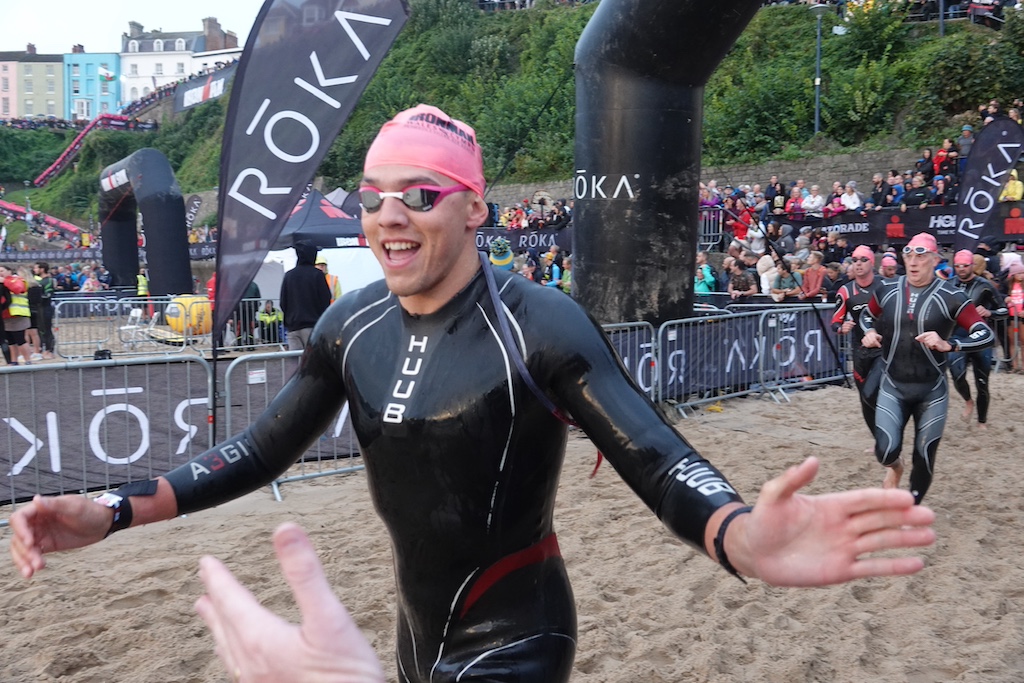
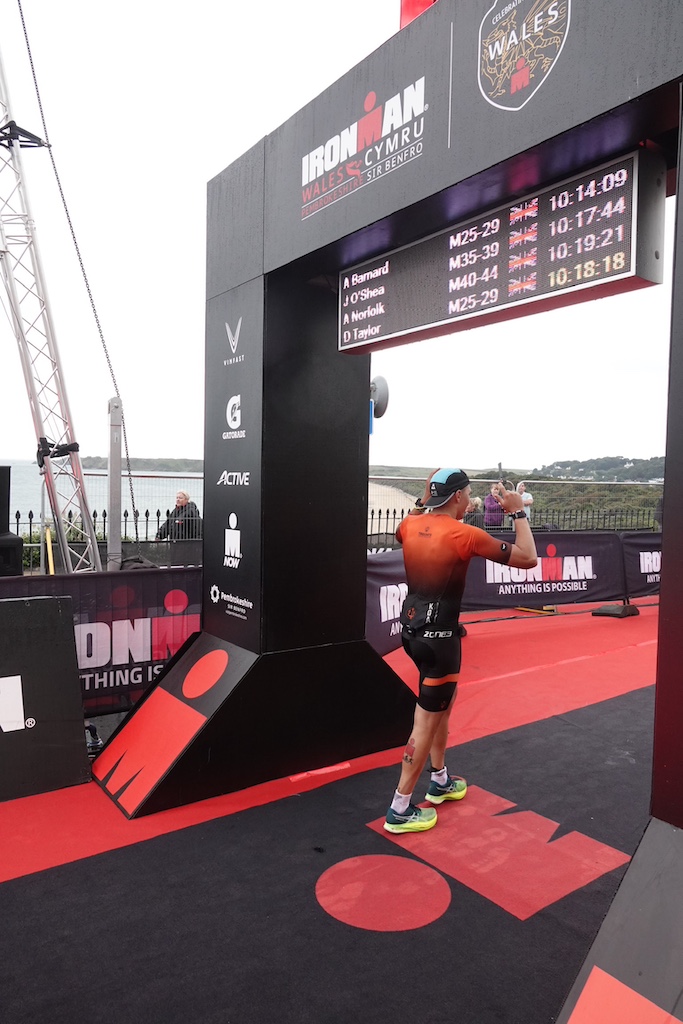
How to conquer Ironman Wales
“Ironman Wales is incredibly tough,” says Taylor. “Not just physically but mentally. There’s a point where you’re relying entirely on yourself. You’ll see your family or support group maybe once or twice, but mostly it’s just you out there.
“Course knowledge is key to completing it. Wales is tough for a reason – it’s technical, with lots of corners, descents, and climbs. Knowing where to push and where to hold back is crucial. It’s also essential to know your body well by that point.”
Taylor’s experience and expertise means he also coaches others in taking on these iconic sporting challenges. “We often take athletes down to train on the course to simulate race day conditions, which helps a lot. We call these ‘metric days’, where we do a scaled-down version of the Ironman – where the athletes complete metric versions of the mile distances – so 26.2km instead of 26 miles – as part of their warm-up to the event. It’s also about practicing race-day breakfast, nutrition, and pacing. It gives athletes confidence or an eye-opener if they need to adjust their expectations.”
IRONMAN Wales takes place on 22 September 2024. To enter for a 2025 Ironman event head to ironman.com/im-wales

